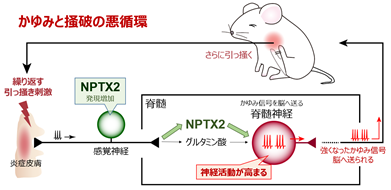オスのクモが交尾後にメスの共食いから逃れるために行うカタパルト行動は、前脚の水圧と弾力性によって可能になる Hydraulic pressure and elasticity in forelegs enable catapulting behavior for male spiders to escape female cannibalism after mating
2022-05-09 シンガポール国立大学(NUS)
研究者らは、交尾中のオーバルウィービングスパイダー(Philoponella prominens:ウラジロガシ科)のオスが、前脚の脛骨-中足骨という伸筋のない関節を水圧で伸展させ、カタパルト機構を作動させることを実証した。脚が急速に伸びることで、オスが性的に共食いする可能性を大きく減らすことができる。
<関連情報>
- https://news.nus.edu.sg/male-spiders-catapult-to-avoid-cannibalism/
- https://www.cell.com/current-biology/fulltext/S0960-9822(22)00485-7?_returnURL=https%3A%2F%2Flinkinghub.elsevier.com%2Fretrieve%2Fpii%2FS0960982222004857%3Fshowall%3Dtrue#secsectitle0010
雄グモはカタパルト機構で性共喰いを回避する Male spiders avoid sexual cannibalism with a catapult mechanism
Shichang Zhang,Yangjié Liu,Yubing Ma,Hao Wang,Yao Zhao,Matjaž Kuntner,Daiqin L
Current Biology Published:April 25, 2022
DOI:https://doi.org/10.1016/j.cub.2022.03.051

Summary
In the animal world, numerous mechanisms have been described that allow for extremely fast actions or reactions via the slow storage of energy, typically in elastic structures, which is then nearly instantly released1,2,3,4, similar to the operation of a catapult. Many of these mechanisms are employed for prey capture1,2or for predator avoidance3,4; however, such superfast actions have not yet been reported as a means to dodge sexual cannibalism. Here, we unveil a novel mechanism in a communal orb-weaving spider Philoponella prominens (Uloboridae) (Figure S1), whereby males undertake a split-second catapult action immediately after mating, thereby fleeing their partner (Video S1). We demonstrate that males achieve their superfast action (up to 88.2 cm/s) by extending the tibia–metatarsus joint of their first leg pair via hydraulic pressure in a joint that is known to lack extensor muscles in spiders. This rapid expansion greatly reduces the likelihood of the male being sexually cannibalized.


